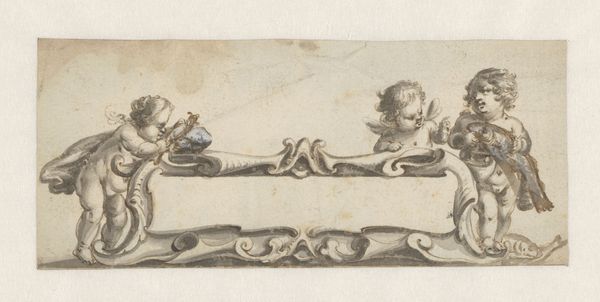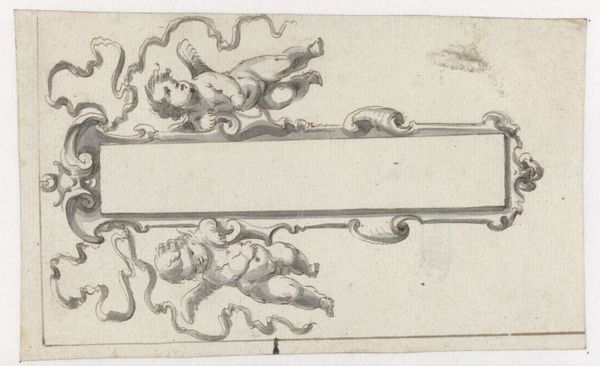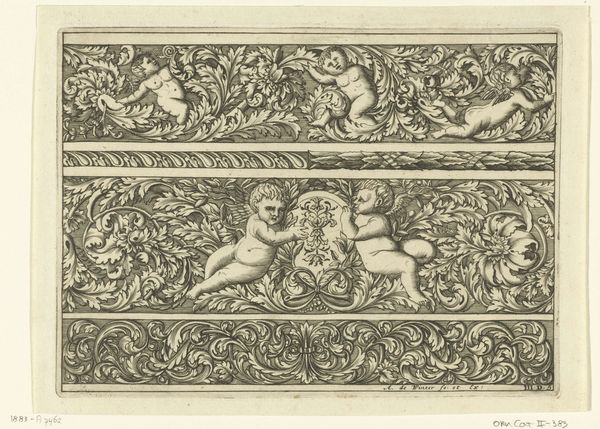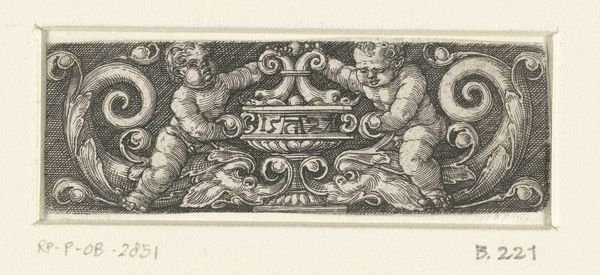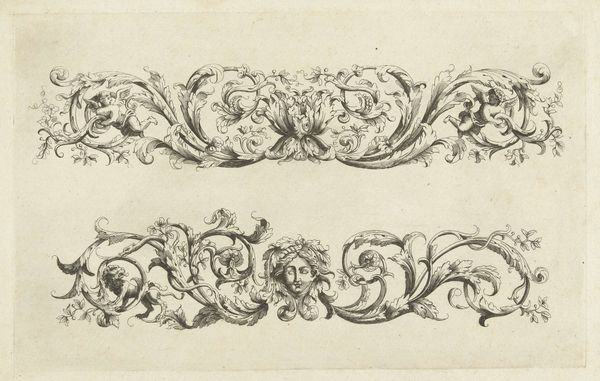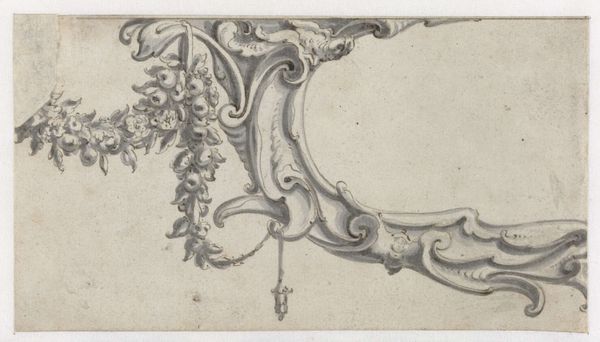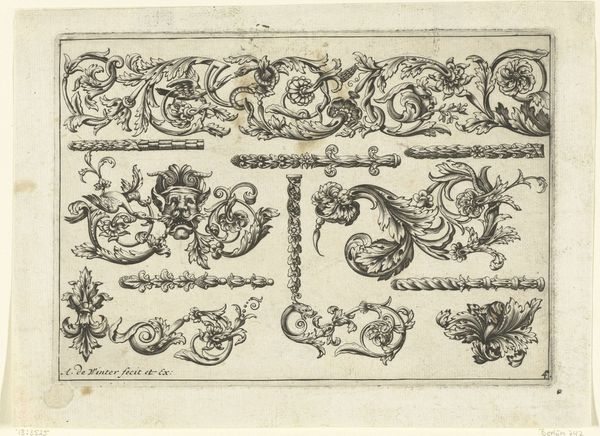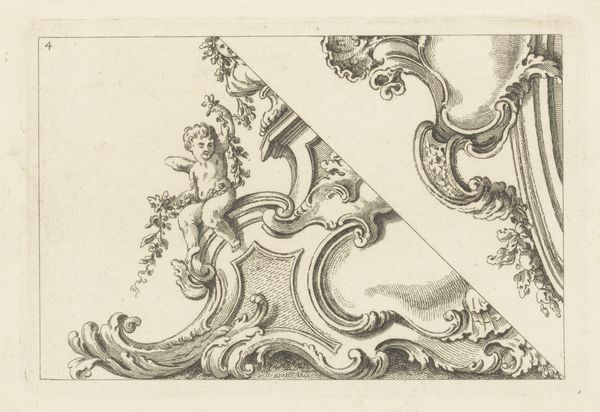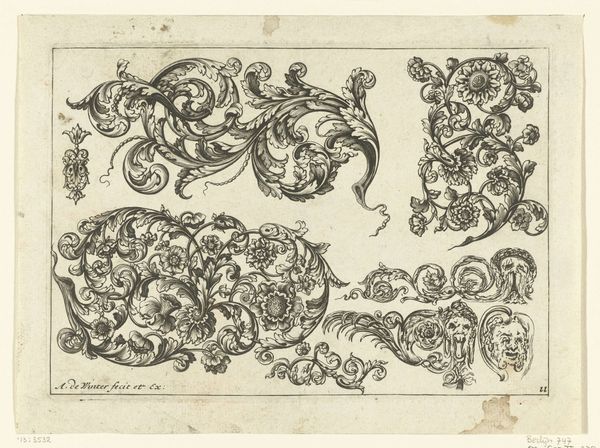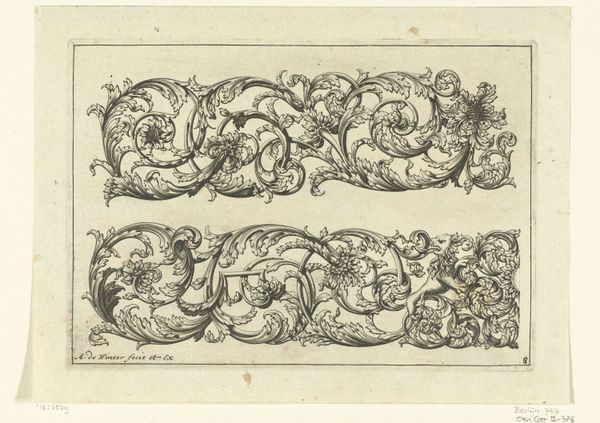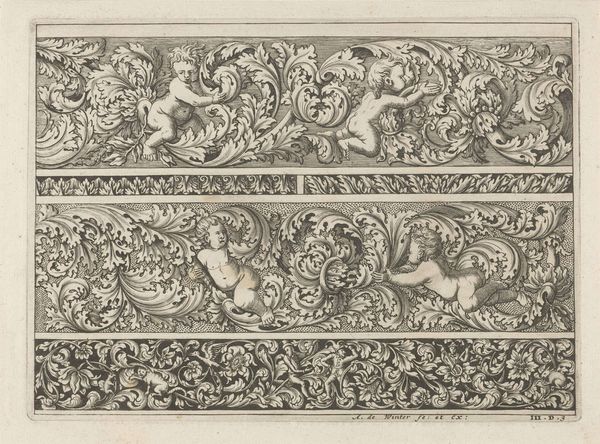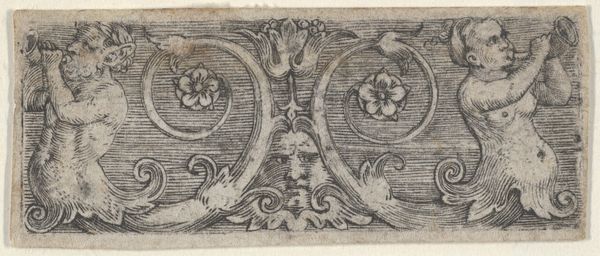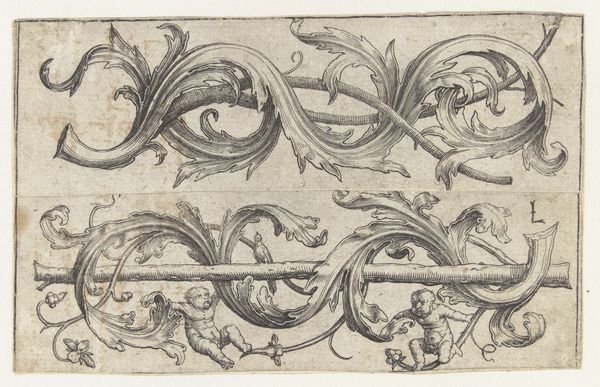
drawing, paper, ink
#
portrait
#
drawing
#
baroque
#
landscape
#
figuration
#
paper
#
ink
#
coloured pencil
#
line
#
sketchbook drawing
Dimensions: height 67 mm, width 120 mm
Copyright: Rijks Museum: Open Domain
Editor: This drawing is called "Cartouche met twee jongens," or "Cartouche with Two Boys," made between 1657 and 1662 by Pieter Jansz. It's done with ink on paper, and the detailing is incredible. It seems meant for a formal inscription, maybe for a building or another artwork. What's striking to you about how it was made? Curator: What interests me most about this piece is its materiality. Ink on paper might seem simple, but consider the production process in the 17th century. The paper, likely handmade, the ink meticulously prepared. These materials weren't simply commodities, but results of specific labor and expertise. Editor: So the value lies partly in recognizing the labor invested? Curator: Precisely! We see this ornate cartouche – probably intended as a frame for someone's name, maybe nobility. The boys signify importance but what about those artisans? This raises the questions about accessibility. How easily and by whom could a product of this craft and detail be acquired? What about those making them? It allows us to analyze the social context, and consumption linked to the artistic value. Editor: That's fascinating; it completely reframes how I look at the artwork. What can you say about production vs pure talent in art? Curator: By focusing on materials and modes of production, we begin to question traditional boundaries of “high art.” It asks us to examine art through the lens of labor, skill and the availability of that talent across different strata of society. Think about other popular decorations. Why did Pieter pick those for his drawning? Editor: That’s definitely food for thought, viewing the art’s worth through social and work implications and not just its aesthetics. It has definitely expanded my interpretation! Curator: I agree! Focusing on the work and accessibility of these beautiful artworks adds layers to what this piece communicated centuries ago.
Comments
No comments
Be the first to comment and join the conversation on the ultimate creative platform.
